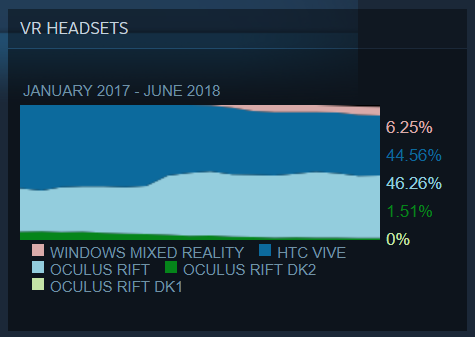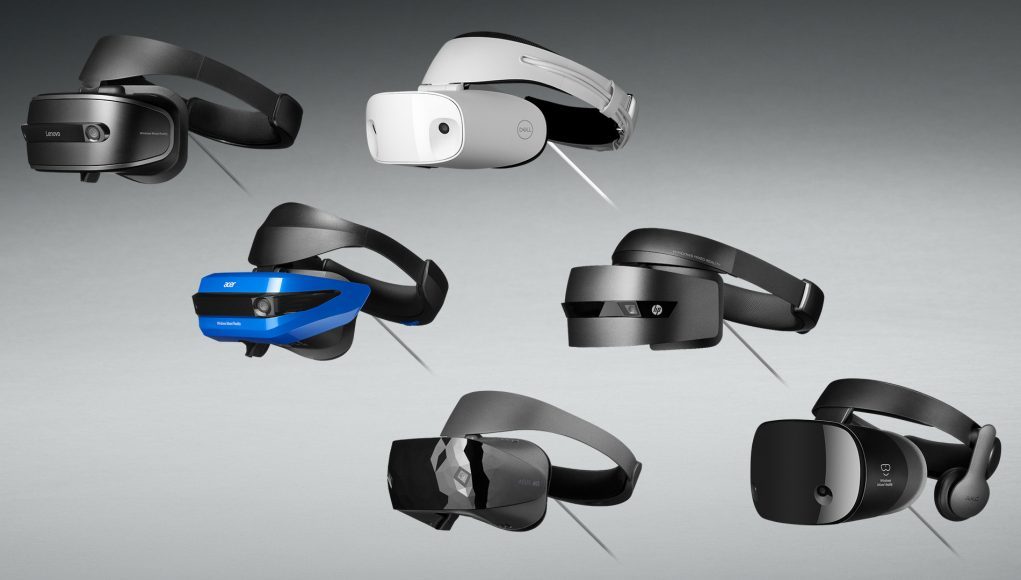The monthly Steam hardware survey is out again, and while June hasn’t revealed any major upsets in the balances of usership between HTC Vive and Oculus Rift, the survey shows that Windows “Mixed Reality” VR headsets are making slow, but steady headway on the platform.
Each month, Valve runs the survey among Steam users to determine some baseline statistics about what kind of hardware and software is used by the user population, and to see how things are changing over time; that includes which VR headsets are connected to users’ computers. Participation in the survey is optional.
Using the Windows Mixed Reality for SteamVR compatibility layer, users can then play VR games on Steam that were originally designed for Oculus Rift and HTC Vive. Windows also hosts WMR-only games on the Microsoft Store.

Referring to last month’s survey, which saw Rift and Vive numbers at close to parity, Windows VR headsets reported on the platform have gone up about a half percentage point—not a big change by any means, but a continued march forward for the class of VR devices manufactured by HP, Dell, Lenovo, Samsung, Acer, and Asus.
Most of the headsets (excluding Samsung Odyssey) boast the same basic hardware specs: inside-out optical tracking, dual 1,440 × 1,440 LCD panels, 90Hz refresh, and around a 100 degree field of view.
The slow uptick in Windows VR users is likely tied to the individual headsets ever decreasing price. At the time of this writing, a new HP VR headset and a pair of motion controllers can be had for as little as $200 on Amazon, or $250 lower than its MSRP. Many of the Windows VR headsets retail for a similarly deep discount now, outside of the Samsung Odyssey, which regularly sells for slightly less than its $500 MSRP.







